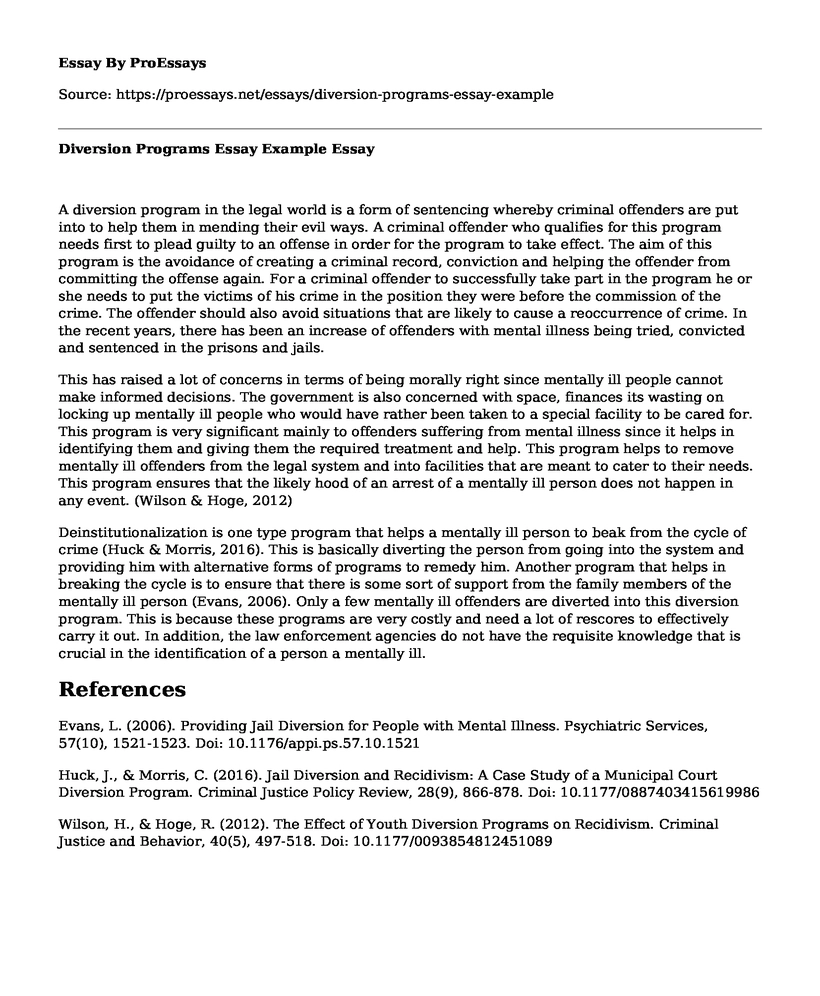A diversion program in the legal world is a form of sentencing whereby criminal offenders are put into to help them in mending their evil ways. A criminal offender who qualifies for this program needs first to plead guilty to an offense in order for the program to take effect. The aim of this program is the avoidance of creating a criminal record, conviction and helping the offender from committing the offense again. For a criminal offender to successfully take part in the program he or she needs to put the victims of his crime in the position they were before the commission of the crime. The offender should also avoid situations that are likely to cause a reoccurrence of crime. In the recent years, there has been an increase of offenders with mental illness being tried, convicted and sentenced in the prisons and jails.
This has raised a lot of concerns in terms of being morally right since mentally ill people cannot make informed decisions. The government is also concerned with space, finances its wasting on locking up mentally ill people who would have rather been taken to a special facility to be cared for. This program is very significant mainly to offenders suffering from mental illness since it helps in identifying them and giving them the required treatment and help. This program helps to remove mentally ill offenders from the legal system and into facilities that are meant to cater to their needs. This program ensures that the likely hood of an arrest of a mentally ill person does not happen in any event. (Wilson & Hoge, 2012)
Deinstitutionalization is one type program that helps a mentally ill person to beak from the cycle of crime (Huck & Morris, 2016). This is basically diverting the person from going into the system and providing him with alternative forms of programs to remedy him. Another program that helps in breaking the cycle is to ensure that there is some sort of support from the family members of the mentally ill person (Evans, 2006). Only a few mentally ill offenders are diverted into this diversion program. This is because these programs are very costly and need a lot of rescores to effectively carry it out. In addition, the law enforcement agencies do not have the requisite knowledge that is crucial in the identification of a person a mentally ill.
References
Evans, L. (2006). Providing Jail Diversion for People with Mental Illness. Psychiatric Services, 57(10), 1521-1523. Doi: 10.1176/appi.ps.57.10.1521
Huck, J., & Morris, C. (2016). Jail Diversion and Recidivism: A Case Study of a Municipal Court Diversion Program. Criminal Justice Policy Review, 28(9), 866-878. Doi: 10.1177/0887403415619986
Wilson, H., & Hoge, R. (2012). The Effect of Youth Diversion Programs on Recidivism. Criminal Justice and Behavior, 40(5), 497-518. Doi: 10.1177/0093854812451089
Cite this page
Diversion Programs Essay Example. (2022, Aug 15). Retrieved from https://proessays.net/essays/diversion-programs-essay-example
If you are the original author of this essay and no longer wish to have it published on the ProEssays website, please click below to request its removal:
- A Reflection Paper: Thirteen Reasons Why
- National Institute of Mental Health Website: Objectivity, Accuracy, and Currency
- Falsely Accused/Racial Controversy - Research Paper
- Essay Example on H.G. Wells's The Pearl of Love: Love, Loss, Devotion & Obsession
- Paper Example on ADHD: Understanding Its Symptoms and Causes
- Essay Sample on Autism: A Developmental Disorder Characterised by Unique Behaviours
- Racial Disparity in Marijuana Use in America - Essay Sample







